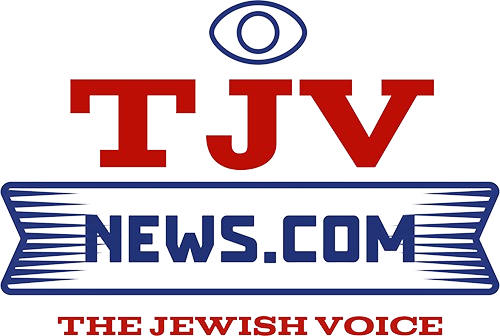Study Reveals New York as the U.S. Hub for the Largest Jewish Population
Edited by: TJVNews.com
The New York metropolitan area remains the most populous Jewish hub in the United States, housing the largest concentration of Jewish people of any metropolitan area nationwide. This is according to the latest findings from the Jewish Community Study of New York 2023, which was released on Thursday by the UJA-Federation of New York. The comprehensive study draws on data collected from nearly 6,000 questionnaires completed in the spring of 2023, providing vital insights into the community’s size, demographics, economic conditions, mental health, religious observance, and participation in Jewish programs.
Eric S. Goldstein, CEO of the UJA-Federation of New York, highlighted the significance of the study, especially in current times. “The 2023 Jewish Community Study of New York offers a comprehensive snapshot of our community. Particularly in this challenging moment, these insights will help guide funding decisions so we can reach people where they are and ensure the strength of our Jewish community and the institutions serving them,” Goldstein explained.
Unlike previous studies, the 2023 report does not draw direct comparisons with the 2011 data due to methodological differences in how the surveys were conducted, including changes from telephone interviews to web-based surveys, variations in survey identification processes, and adjustments in weighting procedures. This approach has been designed to avoid potentially misleading comparisons due to these methodological shifts.
Instead, the study offers a broader historical perspective by looking back at data from 1991 and 2002, thus providing insights into long-term population trends. Over the past three decades, the Jewish population in the eight-county New York area has shown remarkable stability, consistently hovering around 1.4 million people. This stable demographic trend underscores the deep-rooted presence and ongoing vitality of the Jewish community in the region.
The study’s findings are pivotal for community leaders and stakeholders in planning and allocating resources effectively. This strategic approach is crucial, especially in addressing challenges related to poverty and mental health, which are significant concerns for the community according to the study.
One of the most striking findings from the study is that nearly 20% of Jewish households in the New York area are classified as poor or near-poor, living with incomes below 250% of the federal poverty guideline. This translates to approximately 147,000 households, or about 428,000 individuals, grappling with financial hardship. Moreover, a significant proportion of children in Jewish households, 36%, live in or near poverty, calling attention to the impact of economic struggles on the younger members of the community.
Poverty within the Jewish community is notably concentrated in specific boroughs, with Brooklyn, the Bronx, and Staten Island identified as the areas where these challenges are most prevalent. Additionally, about a third of Jewish households (33%) receive some form of government benefits, indicating a reliance on public assistance amid these economic difficulties.
The study also provides insights into the denominational landscape of the Jewish community in New York. According to the survey:
20% of Jewish households identify as Reform, reflecting a liberal strand of Judaism that emphasizes personal choice and ethical living as central components of Jewish belief.
19% of Jewish households identify as Orthodox, a denomination that adheres to a strict interpretation of Jewish law and tradition.
15% report affiliation with the Conservative movement, which seeks a middle ground between the traditional observances of Orthodox Judaism and the liberal approaches of Reform Judaism.
A significant 47% of Jewish households report no specific denominational affiliation or identify with other less common denominational strands.
The study estimates that there are approximately 430,000 Jews living in Orthodox households, which includes about 249,000 adults and 181,000 children. This demographic detail highlights the significant presence of Orthodox Judaism within the New York Jewish community, alongside a considerable portion of the population that either disassociates from traditional denominational labels or aligns with less predominant ones.
These findings underscore the diverse and complex nature of the Jewish community in New York. The significant rates of poverty and the diverse denominational affiliations present both challenges and opportunities for community leaders and organizations. Addressing the economic needs while respecting the varied religious perspectives requires nuanced strategies and targeted interventions.
One of the more poignant findings from the study is the estimated presence of 13,000 Holocaust survivors living within Jewish households in the region, with a staggering 92% residing in New York City. Brooklyn, in particular, is home to the largest number of these survivors, accounting for 65% of the total survivor population in the surveyed area. This significant concentration highlights the city’s role as a critical hub for Holocaust survivor communities, offering unique challenges and responsibilities for local Jewish organizations.
The study also sheds light on the inclusivity of the Jewish community, noting that 14% of Jewish households include a person who identifies as LGBTQ+. This statistic underscores a growing acknowledgment and integration of LGBTQ+ individuals within the Jewish community, reflecting broader social trends towards inclusivity and diversity.
In terms of family structures, the survey reveals that 37% of married Jewish couples are intermarried, illustrating the blending of Jewish individuals with partners from different cultural or religious backgrounds. This rate of intermarriage indicates significant integration within the broader societal fabric and points to evolving attitudes towards marriage and identity in the Jewish community.
Moreover, the aging demographic is particularly notable, with 28% of Jewish adults over the age of 65. This substantial senior population presents specific needs and opportunities for targeted community services and support systems, especially in areas with high concentrations of older adults.
Adding to the demographic complexity, the study found that one in eight Jewish adults (12%) identifies as non-white (including Black, Asian, multiracial, and other) and/or Hispanic. This includes 7% who do not identify as white, plus an additional 5% who identify as both white and Hispanic. These figures highlight the racial and ethnic diversity within the Jewish community, challenging monolithic perceptions and showcasing a multifaceted population.




